Winemaking in the United States is largely synonymous with one state: California. It was in California that a new crop of winemakers challenged the old order of the French in 1976 in what’s now known as the Judgment of Paris. California’s wines ultimately won the taste test, ushering in a tradition of wine production that is anchored in Napa and Sonoma counties, but has also spread to Lake, Santa Barbara, Solano and Mendocino counties. Many of the Golden State’s wines are now considered to be some of the finest in the world.
But that’s not actually where California’s winemaking history begins. It begins in San Diego, a place more famous for surfing and fish tacos than for birthing one of the world’s most heralded winemaking traditions. The short history goes: in 1769, Franciscan minister Father Junipero Serra brought settlers from present-day Mexico into what’s now known as San Diego, founding a mission along with California’s first-ever vineyard.
From there, winemaking spread across the state, but was all but wiped out by the arrival of phylloxera around the turn of century, and was then dealt a fatal blow during the 1920s by Prohibition and Pierce’s Disease, another grape affliction. Today, however, San Diego is inching back toward its heritage thanks to intrepid growers and winemakers determined to restore larger-scale wine production to the region.
Chris Broomell and his wife, Alysha Stehly, own Vesper Vineyards, which culls grapes from a variety of vineyards in San Diego County to make two thousand cases of wine annually. Additionally, they are each winemakers for several other vineyards, some of which are within their own extended families.
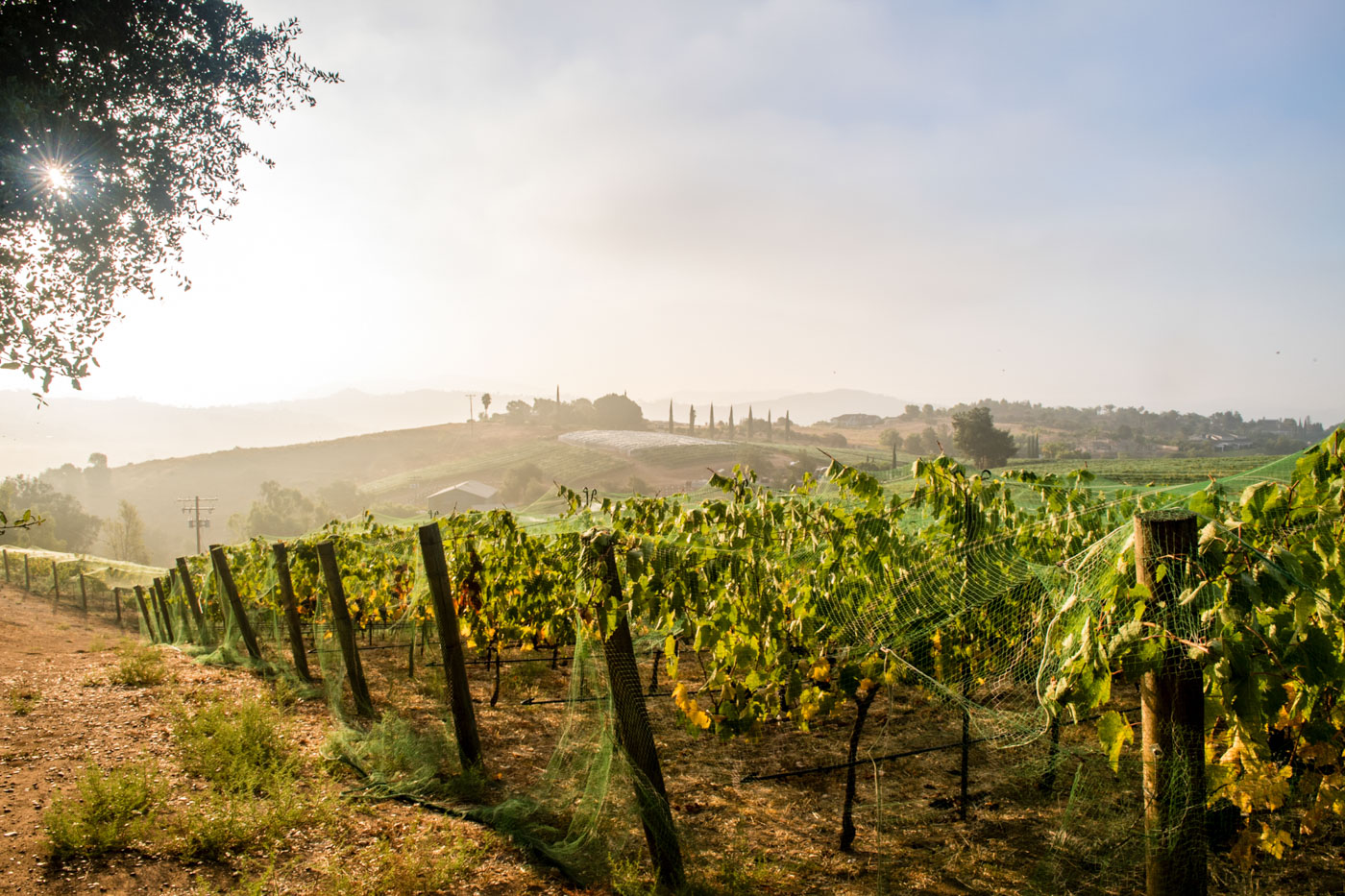
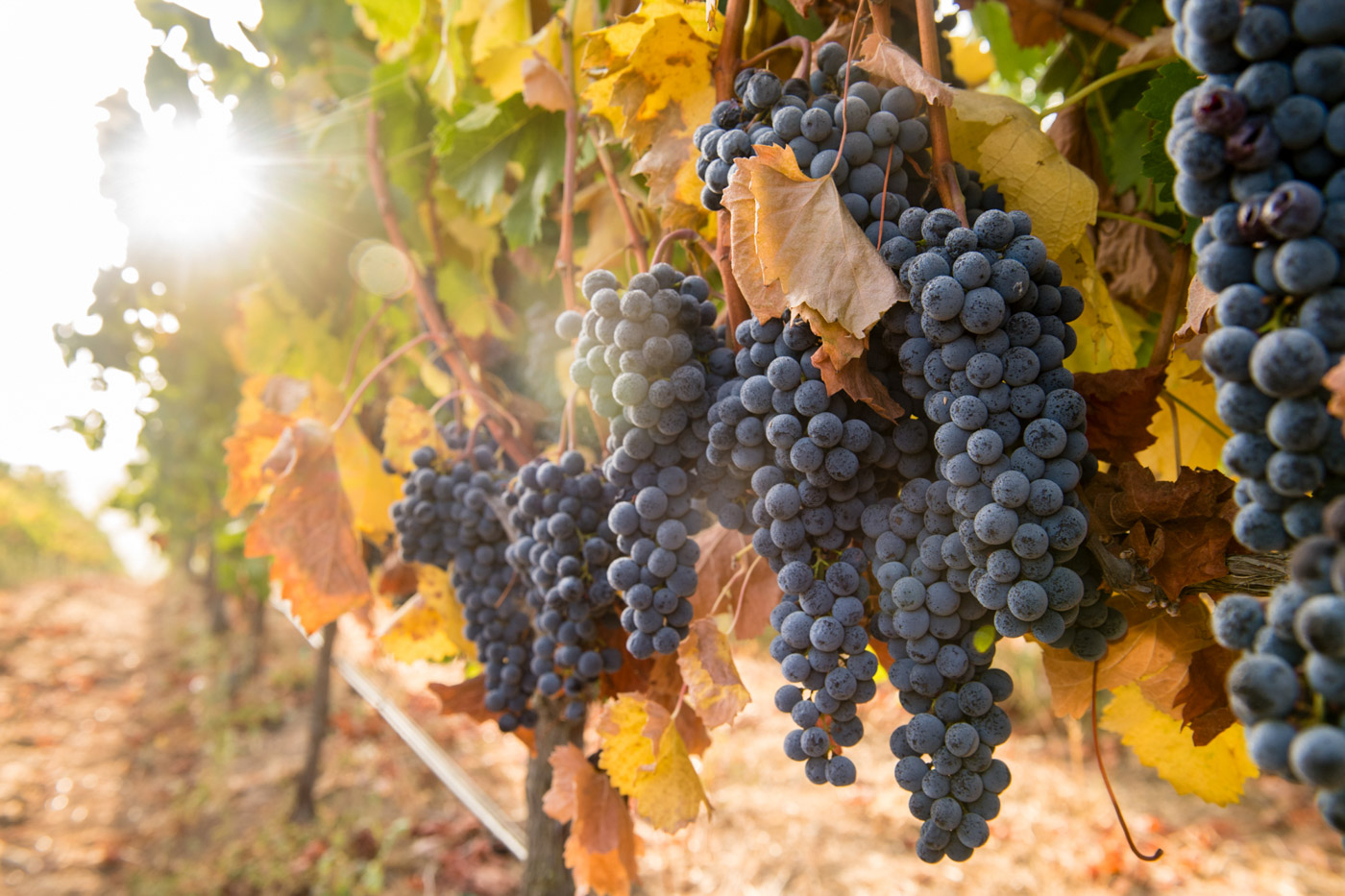
Both Broomell and Stehly grew up in farming families in Vista located in northern San Diego County. Stehly studied viticulture and enology at University of California Davis, spending time on vineyards in Argentina and Chile. Broomell studied environmental horticulture working at a winery before traveling to Australia to experience a harvest, and eventually returning home to make wine. Although they have deep winemaking experience between them, a connection to this Southern Californian land is what keeps them here, rather than seeking out a region with a more developed wine culture.
The couple says commercial winemaking in San Diego gained steam around 2012. The Ramona Valley AVA (American Viticultural Area) was certified in 2006 which, although not the first in San Diego County, seems to be the first that many people—both in and outside the industry—took seriously.
And although water issues aren’t news in this part of the world, California’s recent drought has inspired big changes in San Diego’s winemaking industry. “A lot more vineyards are springing up because it’s a water-wise crop, so people started thinking about growing grapes more thanks to the lack of water we have in San Diego,” Broomell says.
This is echoed by Izaac Villalobos and Abe Way, General Manager and Grower Relations Manager of Fallbrook Winery, a commercial winery in northern San Diego County named for the town in which it operates. In contrast to Vesper and their other projects, the eponymous winery is San Diego’s largest, producing approximately twenty-six thousand cases a year. The winery grows its own grapes in a variety of vineyards and also manages twenty-six other vineyards around the county, sixteen of which are home vineyards. Keeping low key and distinctly San Diego, they don’t actively market their services; instead, they grow quietly by word-of-mouth.
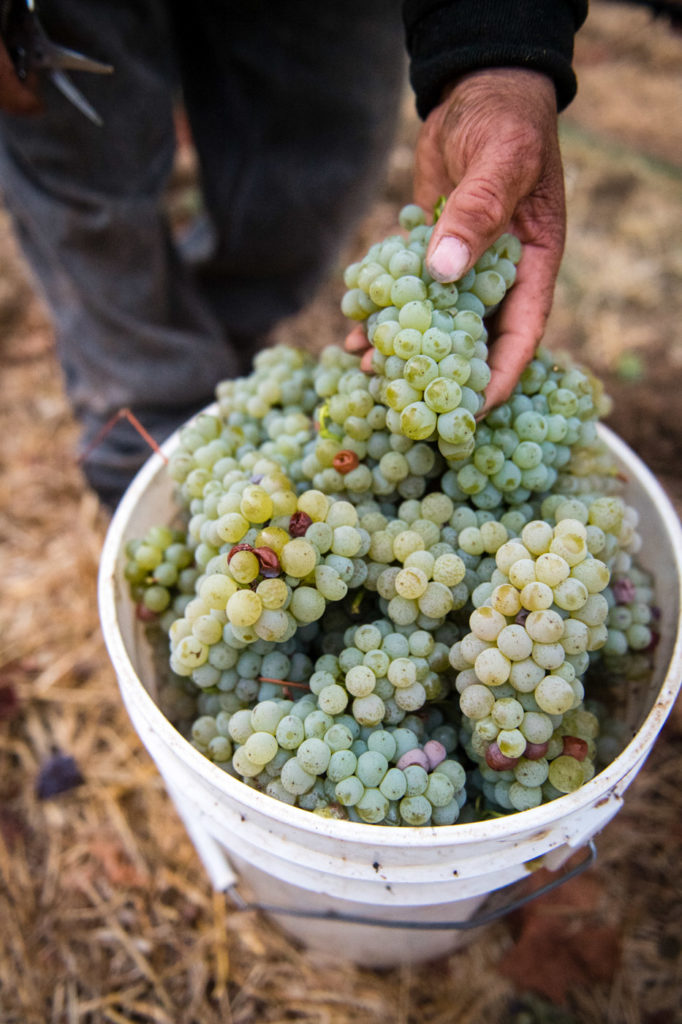
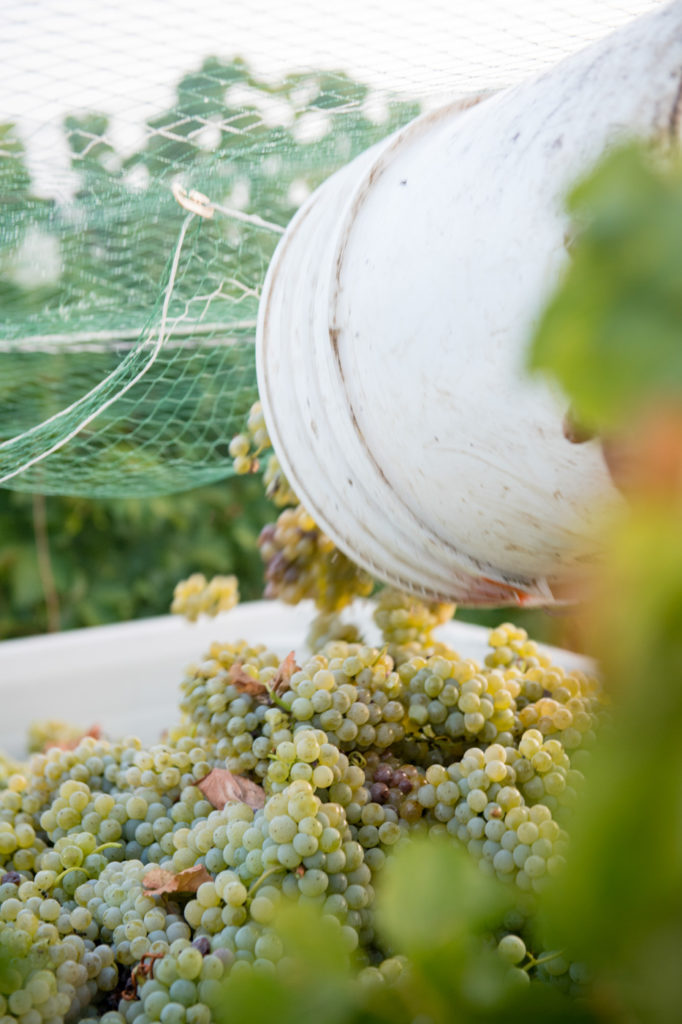
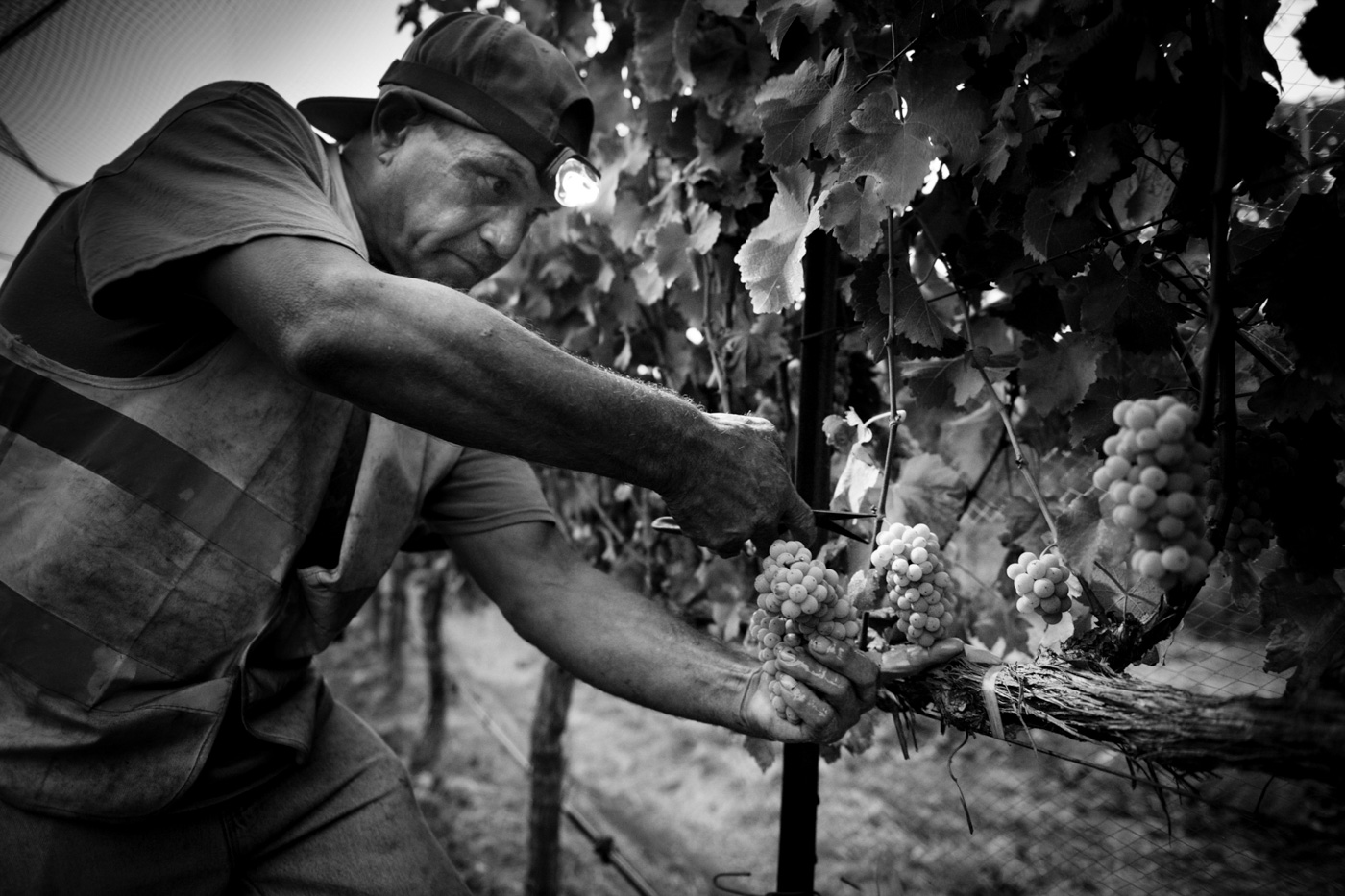
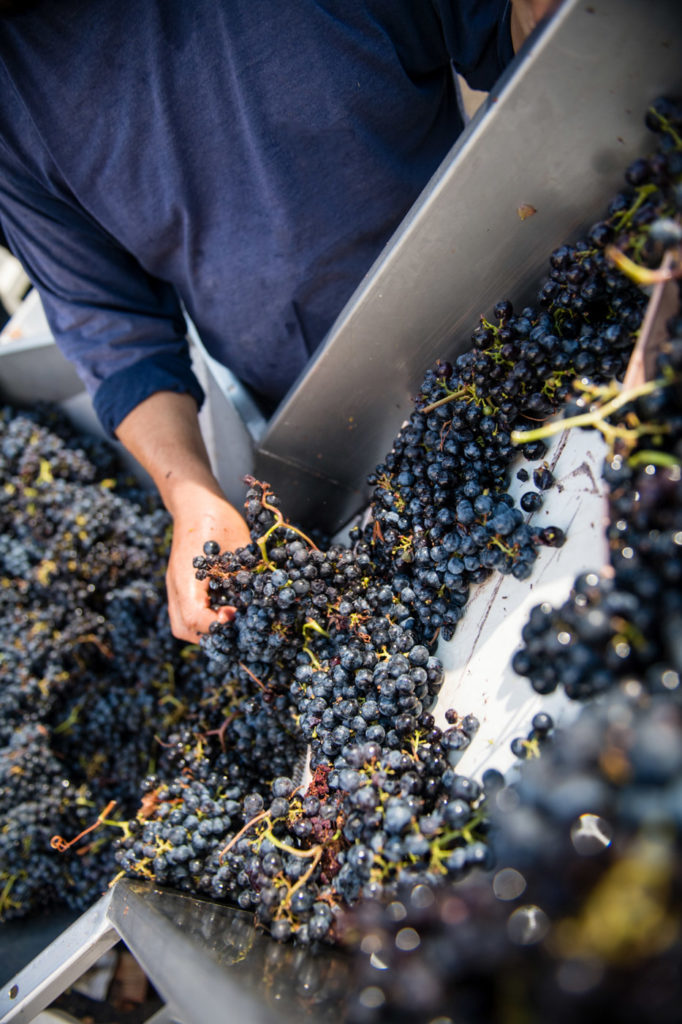
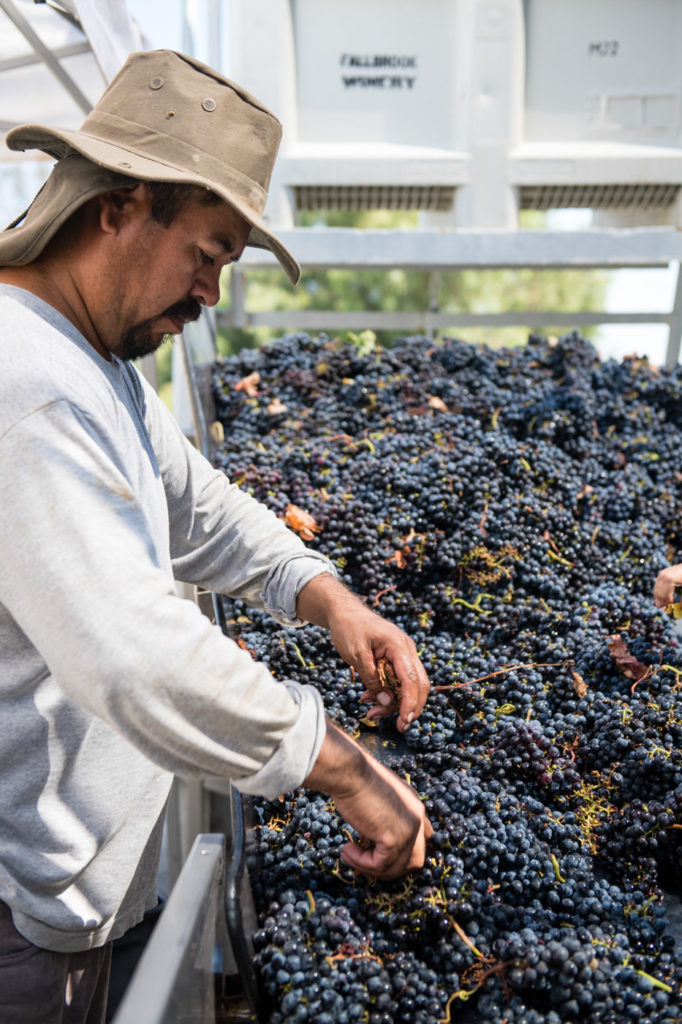
“The fastest segment of our growth is actually avocado grove demolition,” Villalobos says. In many cases, farmers who have had groves or purchased property with an existing avocado planting have recently decided the water bills aren’t worth it. In an effort to make continued use of the land, they engage Fallbrook to overhaul the groves and plant grapes. Often, with Fallbrook’s vineyard management in place, they sell the grapes back to the vineyard, who in turn add to the grape stock used in making their various wine labels.
“This region in particular is really good for growing grapes,” Way says of a particular section of Fallbrook where we meet to survey a home vineyard. “We get this wonderful breeze from the ocean that comes up State Route 76 and fills in these little valleys.”
“We manage properties all over the county—Rancho Santa Fe, Poway, Vista,” Way continues. “In particular, merlot does well in Fallbrook, although that’s not what much of the population wants. Rather than a medium-bodied wine with a flat finish, they want a big, bold cabernet sauvignon.” Way says when he encourages visitors to try their merlot blind, they’re often surprised to find many of those same qualities; it is the “beautiful and full-bodied” wine they’re seeking.
One of San Diego’s boons is that it has “about twenty different microclimates,” Stehly says (it’s something Villalobos and Way mention too). This is significant; it means the door is wide open as far as winemaking styles and grape varieties.
For many winemakers, this lack of rules and tradition is the most attractive aspect. Although Napa and Sonoma are fairly new—considering the thousands of years that make up the history of winemaking—even those areas are largely hemmed in by the use of a few grapes along with specific winemaking techniques. This is not so in San Diego.
“Pushing the limits—that’s a lot of what [Broomell] does with all of the brands he works with,” Stehly says. “He experiments with unique varieties well-suited for the climate, but that may not be what the average consumer knows.”
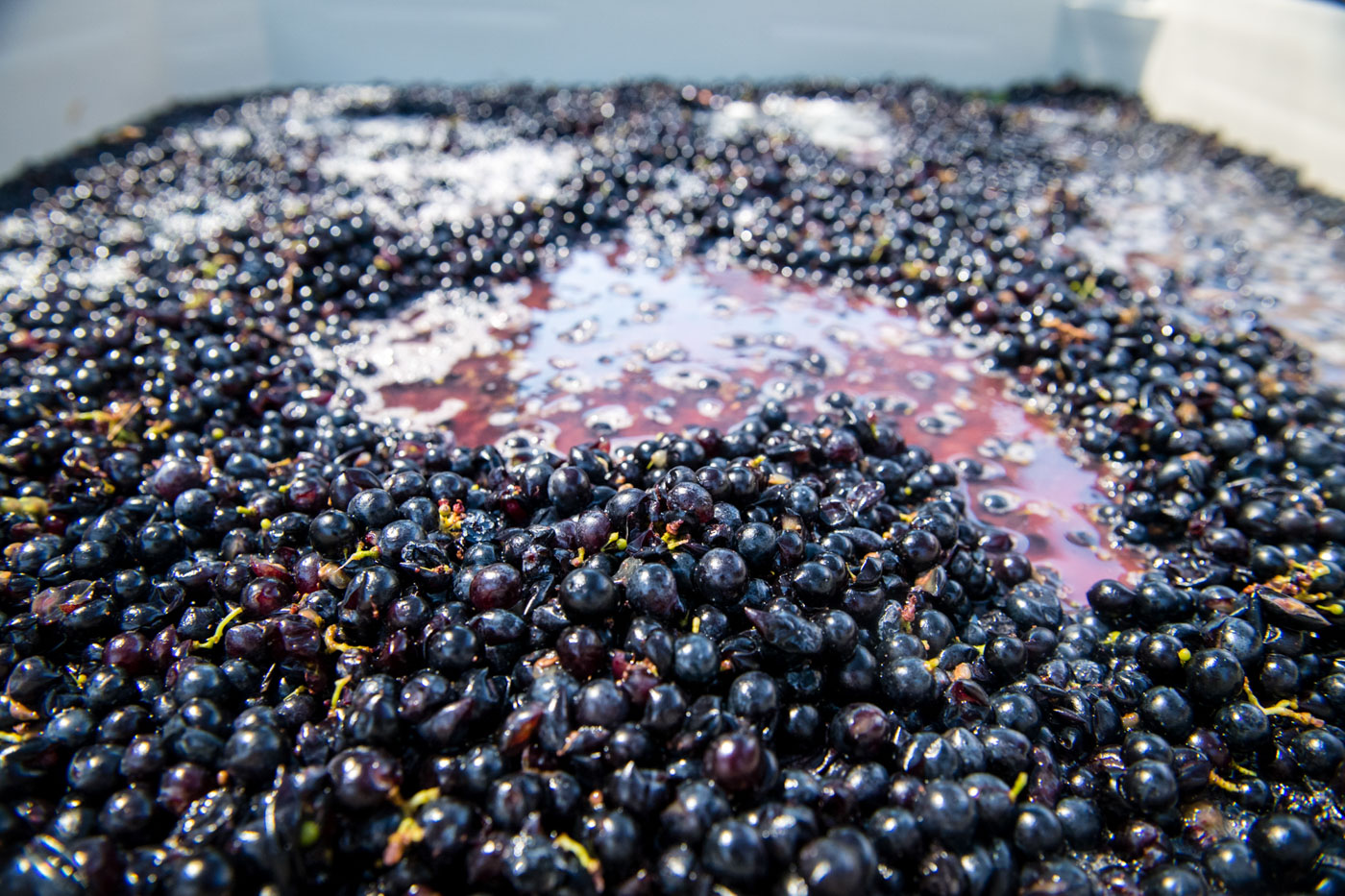
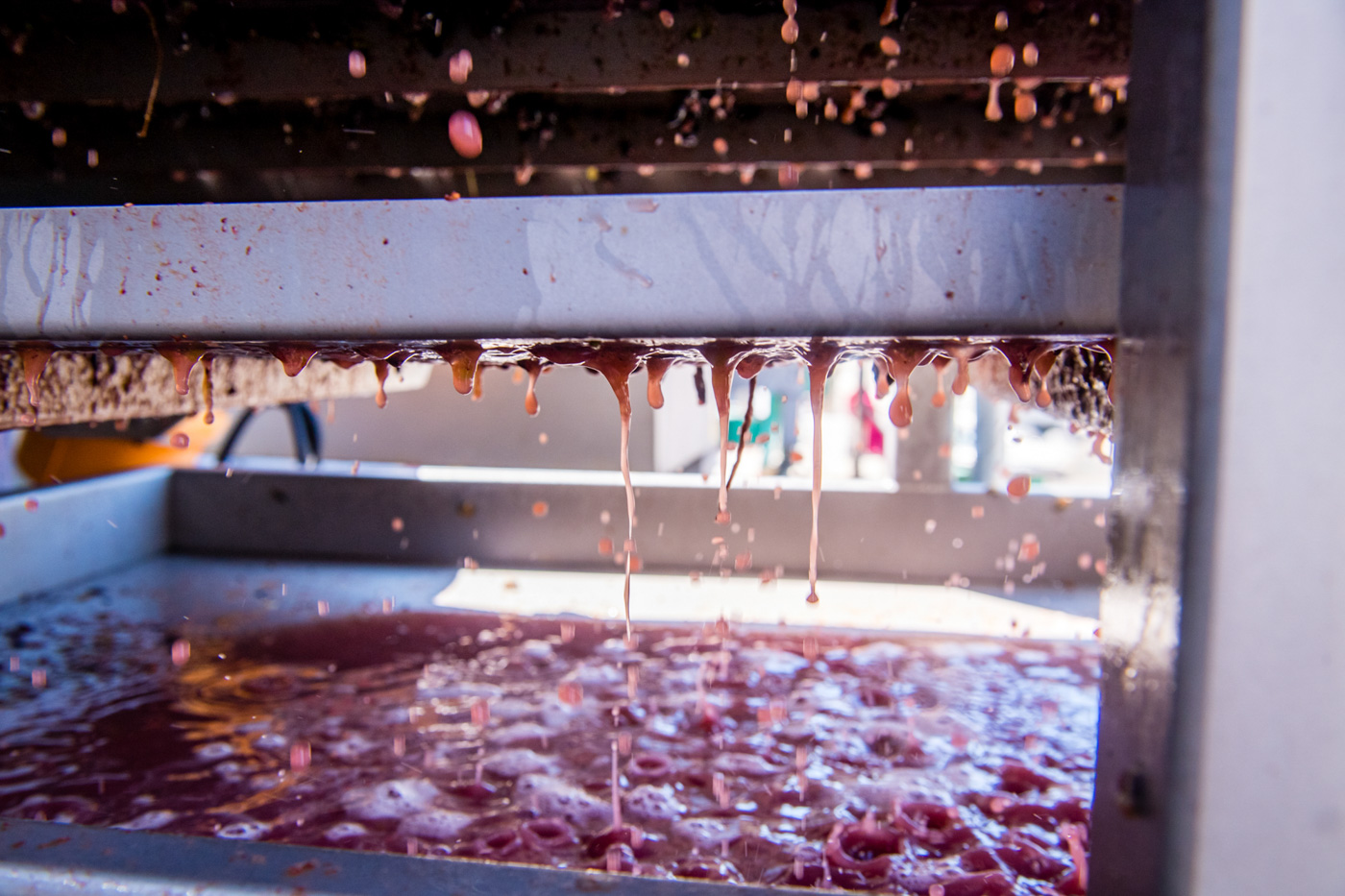
Broomell works with a lot of southern Rhone varieties, like grenache, mourvedre, and other grapes like grenache blanc roussanne, tempranillo, macabeu, ugni blanc and albariño. He says he tries to think of regions around the world with similar climates. “I utilize those varieties to make different styles of wine that naturally work in San Diego, as opposed to having to try to manipulate grapes when they come in because they’re not growing very well,” he explains.
Broomell also employs techniques that are gaining steam in some circles of winemaking but may be unorthodox in more staid, traditional wine producing regions. Some of his wines are reduced, meaning he limits as much exposure to oxygen as possible during the fermentation process, thereby preserving fruity and vibrant qualities.
He is light-handed with the use of sulfates, only adding a small amount before bottling, and relies on native yeasts for spontaneous fermentation. “This is what I’m doing to best express the best vineyard types in San Diego,” Broomell says. “My wines are more of a natural expression, as opposed to a winemaker’s expression. It keys into the changes in climate and the time of year; I’m not trying to make a consistent vintage to vintage wine. Some years will be a little more earthy and less-fruit driven, and it can flip the next year.”
Way says Fallbrook Winery examines each vineyard site individually, whether owned by Fallbrook or simply managed by it. They’re attentive to varying soils and climates found in San Diego County, which informs what they will grow. “We plant what grows well there versus what is popular. That’s our biggest focus. We push our clients in certain directions, but occasionally, we’ll have an outlier who planted something seemingly random that turns out to be outstanding,” he says.
But there are challenges, and Stehly lists a variety of impediments to business, including a lack of winemaking infrastructure, the limited availability of parts and equipment and the people who can repair them, as well as a dearth of skilled labor with experience in winemaking. Freight is another issue, as San Diego lacks the shipping lines to adequately transport large quantities of wine the way Napa and Sonoma can.
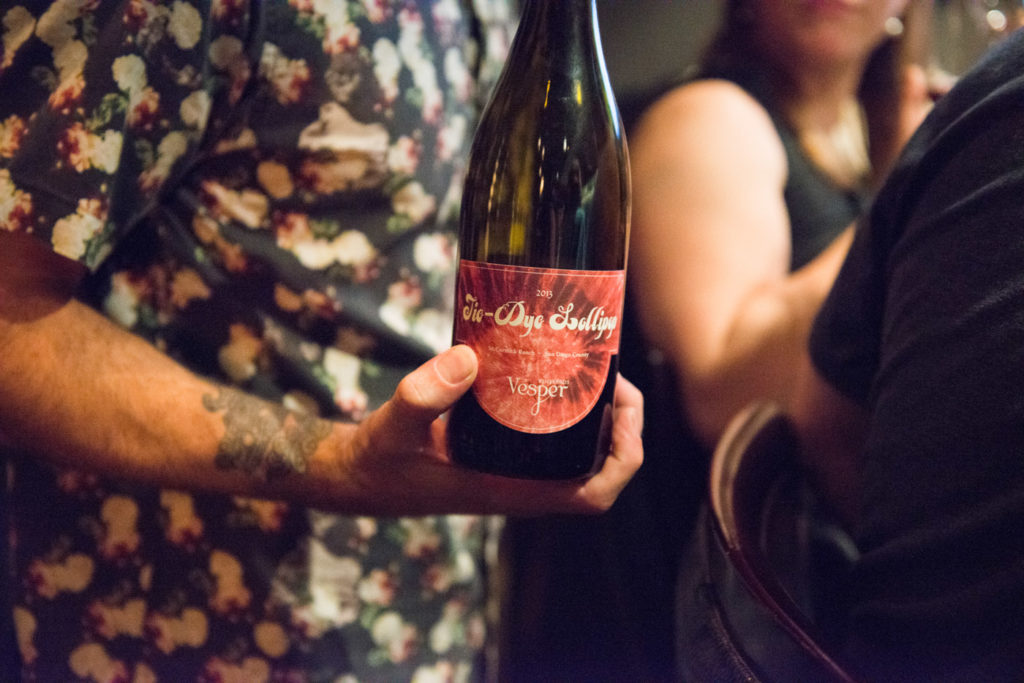
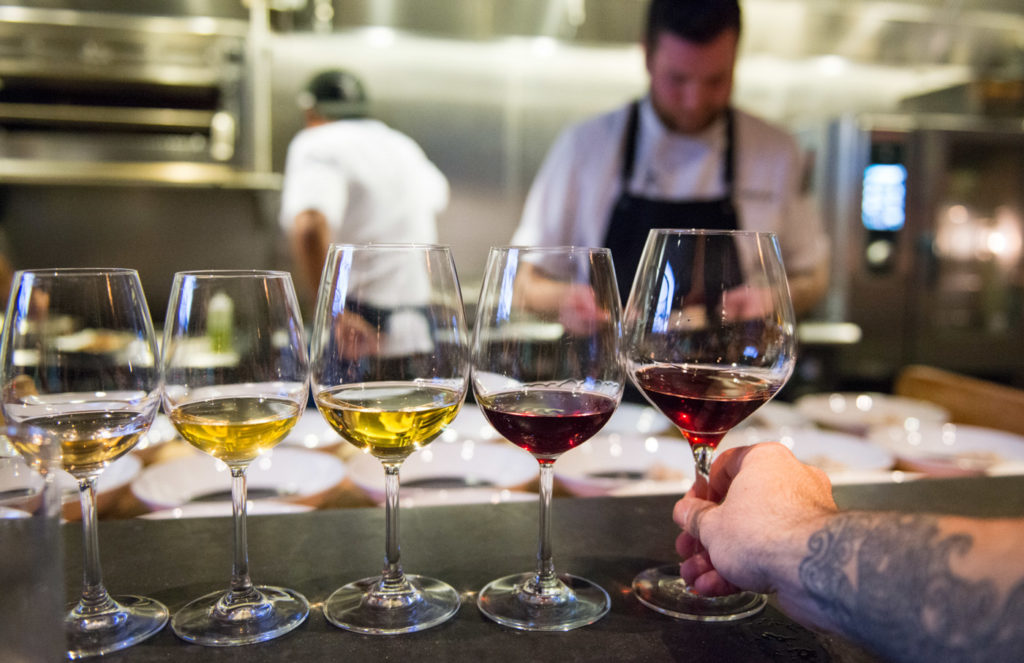
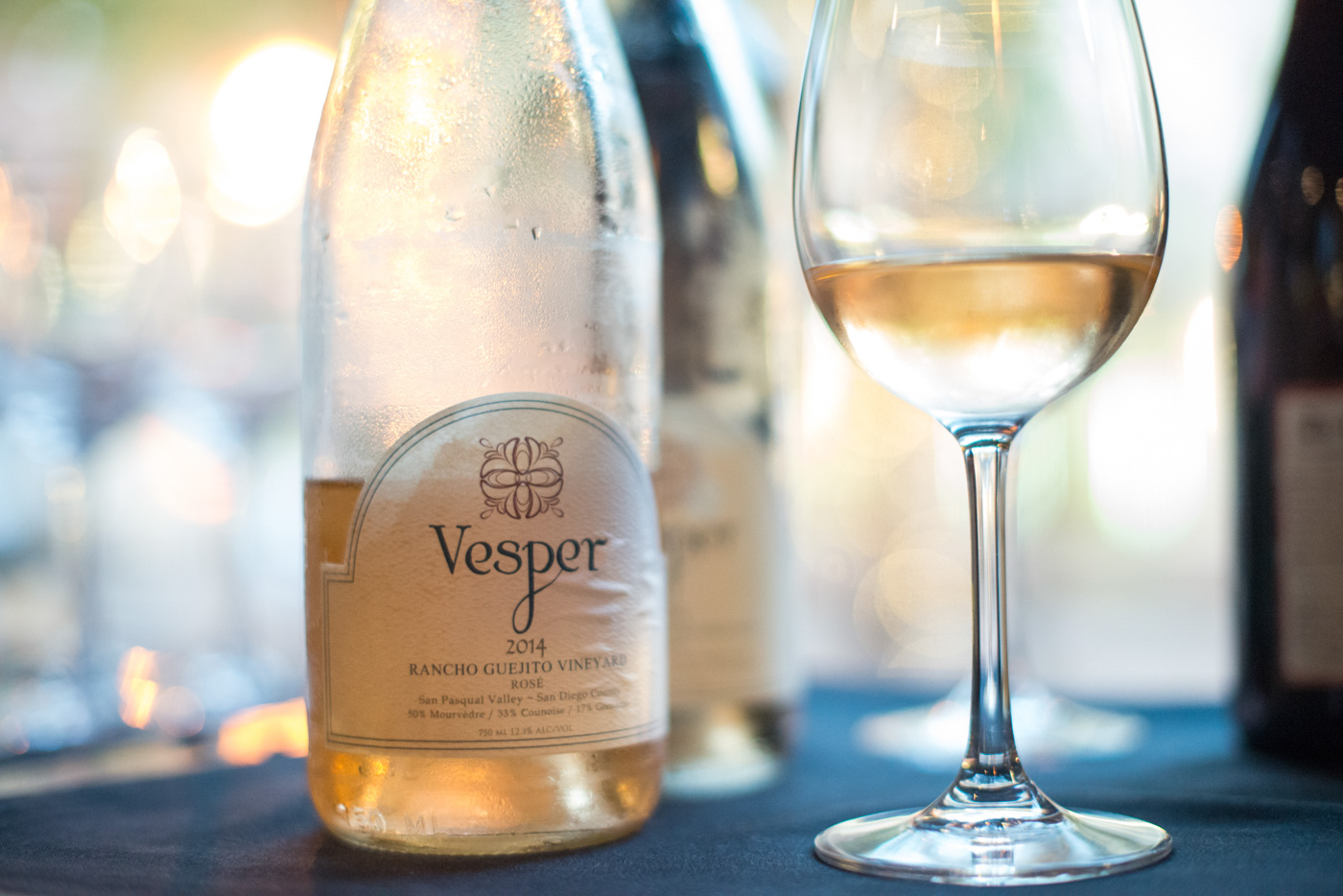
“We’ve had to learn things most winemakers don’t have to learn. I’m good at scheduling freight shipping and arranging for barrels,” Stehly says. “We don’t have the luxury of having sales reps, a lab, or a winemaking supply store nearby. We have to think ahead and do it ourselves most of the time.”
But the regional industry is seeing growth, as evidenced by an increase in hiring among local wineries. They have also seen a growing demand for their wines, especially in Los Angeles, San Francisco and New York.
“San Diego’s wine industry is definitely on the right path. A lot of the San Diego wineries out there are mom and pop—lots of retirees saying, ‘I like wine. I have some land. I’m just going to do it,’” Way says. He observes as the regional industry has grown, it has concurrently improved. He says in the past, “There have been a lot of inconsistencies in style, cultivation and quality. In the past five years though, I’ve seen a turn. People are getting professional, asking questions and quality is greatly improving with San Diego Wine.”
“There’s so much opportunity; it’s like we’re in our infancy with the San Diego wine region. We’re growing and learning, and there are some amazing wines being made here,” Stehly says, looking ahead with excitement. “And there are no set rules. We can do whatever we want.”

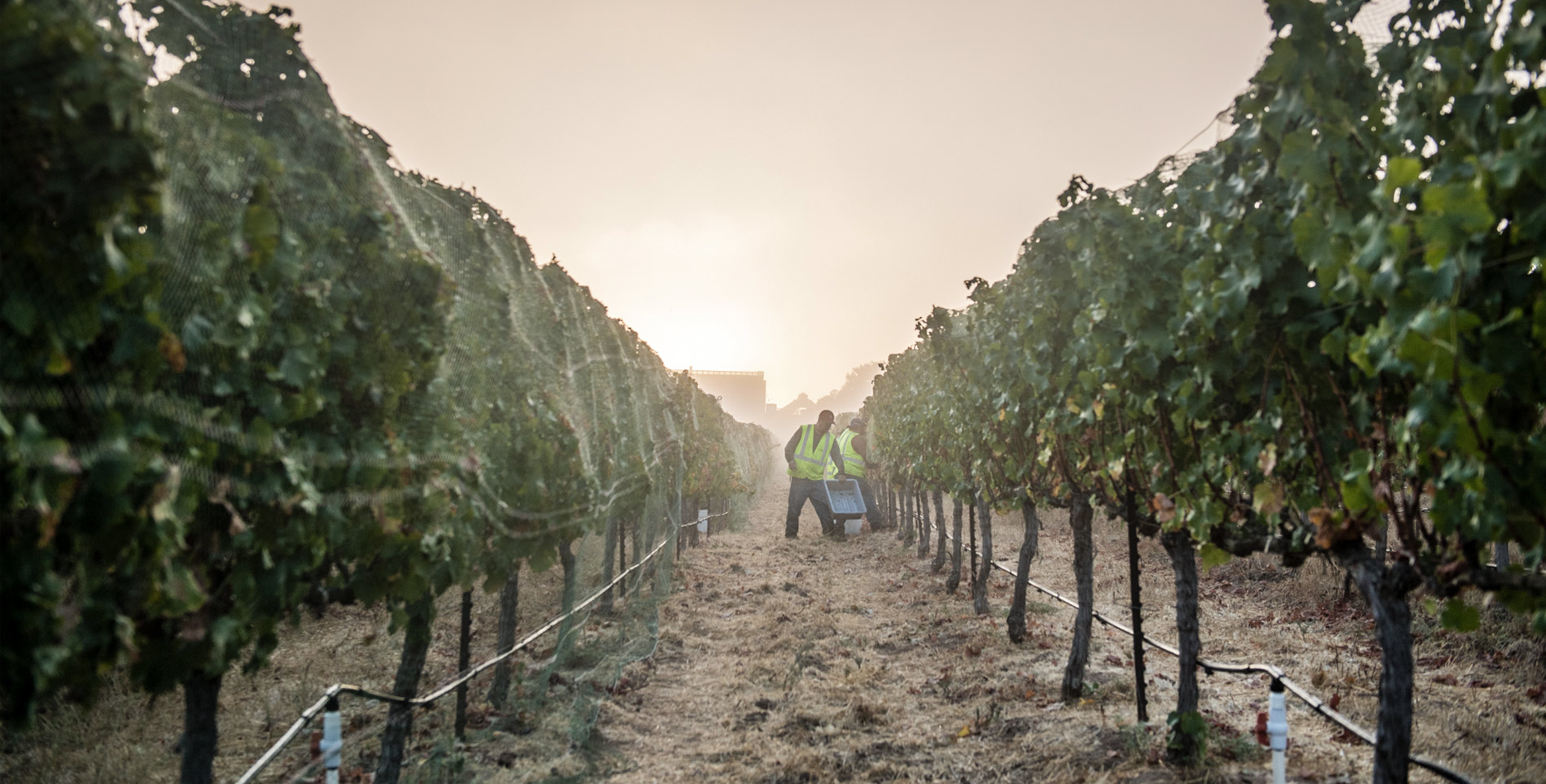

Our comments section is for members only.
Join today to gain exclusive access.